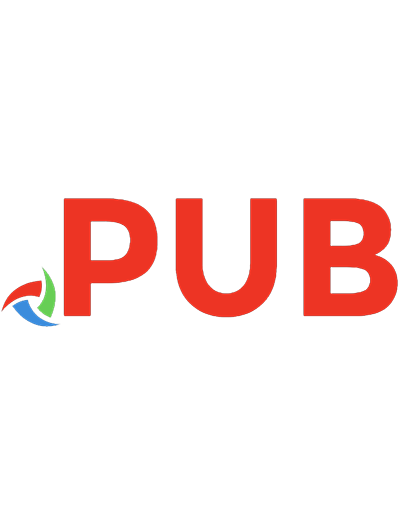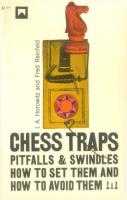7 Creative Bottlenecks And How To Overcome Them
735 87 265KB
English Pages 10
Polecaj historie
Citation preview
Simplicity in all things, that is the way. ©Evenant, Ltd. 2020 Written by Evenant Co-Founder Walid Feghali Proofread by Eben Schumacher www.evenant.com www.walidfeghali.com
Creative Bottleneck #1 Starting Without an End in Mind “If a man knows not to which port he sails, no wind is favorable.” Lucius Annaeus Seneca Starting a new task or project can be a daunting thing. Oftentimes we don’t know where it’s heading, or if it will turn out to be our best work yet or something to throw in the trash can. This is when it’s important to understand that in order to create good work consistently, you need to start with an end in mind, or, at the very least, a strong direction to follow. Many creators start aimlessly and end up worn out, uninspired, and unhappy. What they end up creating isn’t meeting their expectations or standards, and it doesn’t go the way they want it to go. This is because they don’t set proper, achievable goals for the project. Start your project by having an end in mind. Have an idea of the painting you want to create and the direction you want to take it. If you’re writing a book, know where your story should lead. The great thing about this is that we are not bound to this end. Happy accidents happen, and we might find that we want to follow an even better path. Having this kind of goal is simply an anchor; the “true north” for our creative compass that will guide us through the unknown and uncertain in our creation process.
Action Step #1 Each time you sit down to start creating, tell yourself exactly what you want to achieve, and be specific!
Creative Bottleneck #2 Fear Of Messing Up “Those who are willing to fail will win. Don’t fear failure, embrace it.” John Michael Morgan In all things, I believe that being bold and pushing the boundaries of what you have tried before is what will really allow you to shine. In visual art, creating bold strokes, designs, and shapes can make your artworks truly stand out and come alive. In business, sometimes the most outrageous ideas can gain traction and become the norm. You just have to let go of the fear of failure. Dare to mess up your work! Perhaps that will be what allows you to realize how to continue to make it even better than before. Just like in evolution in nature itself, where mutations, being random errors, can sometimes prove to be highly beneficial to the survival and success of a species, so can random errors benefit your creative project. Experimentation and exploration are key in unlocking the creative potential you have within yourself. Dare to mine the fertile veins of creativity that reside deep within you.
Action Step #2 Develop your creation to a decent state, then deliberately mess it up to try something new. Incite more happy accidents and be bold!
Creative Bottleneck #3 Exploring Too Few Ideas “One doesn’t discover new lands without consenting to lose sight, for a very long time, of the shore.” André Gide This creative bottleneck is linked with the second one, in that a fear of messing up crystallizes into a lack of exploration, which, in turn, solidifies into a stalemate with creativity. We can break this vicious cycle of uninspiring results by daring to try something we have never tried before. Try using some strange chord voicings in your music, or a stark contrast of complementary colors in your artwork. Make use of all the amazing tools available to us today in your creation to push the boundaries of what is creatively possible. Explore different programs, apps, books, methods, and techniques. Take a variety of courses and try out a bunch of tutorials. Read books and implement their teachings. All of this action will crystalize into habit, which solidifies into pure skill. As a beginner, adopting a very bold mindset can be daunting, but your future self will thank you for daring to explore and experiment.
Action Step #3 As you’re working on your project, flip it upside down, or horizontally. See it from a different angle. Twist it, turn it, mangle it, take it a full 180 degrees from its original state. You might find even more happy accidents this way.
Creative Bottleneck #4 Not Using References “If I have seen further than others, it is by standing on the shoulders of giants.” Sir Isaac Newton This bottleneck is one of the most common of all. People look at using references and guides as some form of cheating, stealing or plagiarism. This couldn’t be further from the truth. You need references to create work quickly, and with good results. It is surprisingly hard to mimic entirely what another has created. This is especially true with the arts, but it also applies to almost all other fields. What you create will always have your personal and unique signature on it. As you are producing your work, use references to solidify your understanding of the fundamentals of the subject. Find masterpieces of art and reference them in your own work. Look at how Apple makes new products and use their strategies for your own business. Listen to Howard Shore’s music and how his cadences cater to the emotions of the audience. Don’t try to reinvent the wheel, but rather improve upon it.
Action Step #4 Take something beautiful that you admire, and try to imitate it completely. Learn from it. (If you publicize your creation based off of something else, make sure it is legal for usage)
Creative Bottleneck #5 Always Aiming For Originality “Bad artists copy; good artists steal.” Pablo Picasso Originality is something we all want to achieve. We want to create something fresh, something never before seen. But this holds us back from our true creative potential, because we don’t allow ourselves to reuse what masters before us have done. The strive for originality is key to taking your work out of the ordinary and reaching for the stars, but as a beginner, simply creating and becoming well-versed in the subject is what will truly set you apart. Keep producing and don’t worry about originality, for it will come. You will become so comfortable with what you know that you will naturally want to learn and experiment with more original ideas. They will come on their own. Master what others have mastered, then recycle it through your own imagination to create something completely fresh.
Action Step #5 Keep your next five creations within your comfort zone and make them as good as you can. Even if the world has seen it a million times before, it will improve your skill and technique each time.
Creative Bottleneck #6 Practice Makes Progress, Not Perfect “Have no fear of perfection – you’ll never reach it.” Salvador Dalí The perfectionist mindset is a hard one to get out of. It presents a dilemma of whether you should strive to improve your creation until it reaches its apex, or call it finished and move on because you’ll get more done and improve even more quickly. My advice is to never lose that thirst for excellence. Stay on the course of always seeking improvement. But learn when to call it finished. It is entirely up to you. You could spend an extra three days on this task, or identify the 20% of the aspects that make up 80% of the quality of your work and double down on those to finish earlier. Very often we hear “practice makes perfect” . This presupposes that perfection exists as a tangible thing. It doesn’t. It is up to us to subjectively decide what is perfect. A much better sentiment is that practice makes progress. You will always progress, learn new things and improve yourself and your craft. Keep striving for excellence, but know when to say “this is done” . Action Step #6 If you look at your work and you are pleased, simply say “This is done. I am now moving on to the next project”, and be done with it. You want progress, not perfection.
Creative Bottleneck #7 Getting Too Complex “Simplicity is the final achievement. After one has played a vast quantity of notes and more notes, it is simplicity that emerges as the crowning reward of art.” Frédéric Chopin Simple = awesome. If there is one thing that will make it easier for you to progress and reach success with your creation, it is to simplify. Break things down to their most elemental parts and understand what constitutes great work. When you identify these parts, you will know where you should focus and the entire process becomes so much easier. Masterful paintings, musical works, business ideas and book plots can all be highly detailed and rendered out extremely well, but in their essence, there are a few key elements that make up the most of their quality. It is your job to find them, and learn how to simplify. Physicists use an approach called “the first principles”. They break down complex matters into their most fundamental elements, which they later can use to explain things in a simpler and more logical way. I want you to think in this way too. Use the first principles to your advantage, and make it easier on yourself to create amazing work more quickly and smoothly. Action Step #7 Simplify your entire project into a few elements by identifying the first principles. Break it down. Remove any unnecessary and confusing parts and build on that.
Follow these action steps to ensure that you keep your creativity and productivity on point. These mindsets and methods and this philosophy will accompany you throughout all your projects and creations. Not only are they useful for musicians, designers and other artistic people, but also for any creative person, entrepreneur, innovator, or craftsman. Creativity lies within us, and in every field we’re in, we need to be able to draw upon it and produce good work. Best of luck to you! Walid Feghali, Evenant Co-Founder ©Evenant, Ltd. 2020

![How to grow a novel: the most common mistakes writers make and how to overcome them [First edition]
9781466865006, 1466865008](https://dokumen.pub/img/200x200/how-to-grow-a-novel-the-most-common-mistakes-writers-make-and-how-to-overcome-them-first-edition-9781466865006-1466865008.jpg)








